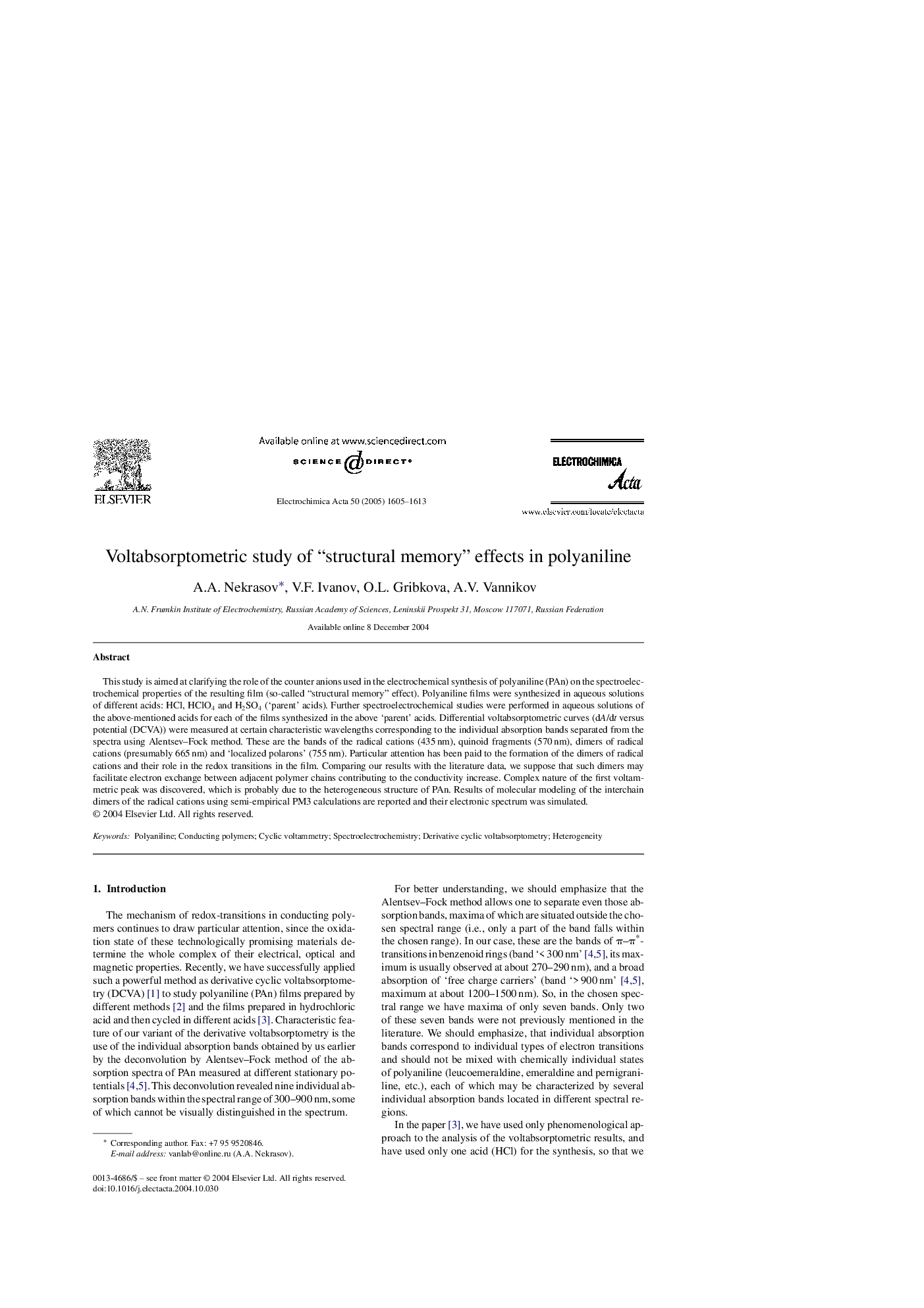| Article ID | Journal | Published Year | Pages | File Type |
|---|---|---|---|---|
| 9625615 | Electrochimica Acta | 2005 | 9 Pages |
Abstract
This study is aimed at clarifying the role of the counter anions used in the electrochemical synthesis of polyaniline (PAn) on the spectroelectrochemical properties of the resulting film (so-called “structural memory” effect). Polyaniline films were synthesized in aqueous solutions of different acids: HCl, HClO4 and H2SO4 ('parent' acids). Further spectroelectrochemical studies were performed in aqueous solutions of the above-mentioned acids for each of the films synthesized in the above 'parent' acids. Differential voltabsorptometric curves (dA/dt versus potential (DCVA)) were measured at certain characteristic wavelengths corresponding to the individual absorption bands separated from the spectra using Alentsev-Fock method. These are the bands of the radical cations (435Â nm), quinoid fragments (570Â nm), dimers of radical cations (presumably 665Â nm) and 'localized polarons' (755Â nm). Particular attention has been paid to the formation of the dimers of radical cations and their role in the redox transitions in the film. Comparing our results with the literature data, we suppose that such dimers may facilitate electron exchange between adjacent polymer chains contributing to the conductivity increase. Complex nature of the first voltammetric peak was discovered, which is probably due to the heterogeneous structure of PAn. Results of molecular modeling of the interchain dimers of the radical cations using semi-empirical PM3 calculations are reported and their electronic spectrum was simulated.
Related Topics
Physical Sciences and Engineering
Chemical Engineering
Chemical Engineering (General)
Authors
A.A. Nekrasov, V.F. Ivanov, O.L. Gribkova, A.V. Vannikov,
